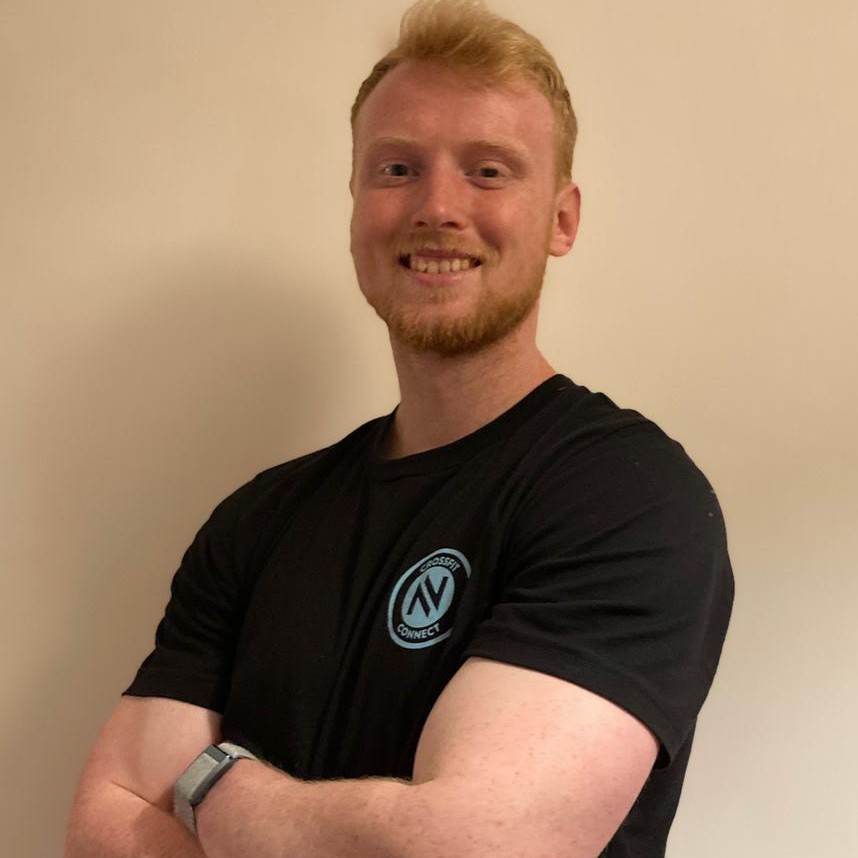I Tried Harry Styles’ Workout From His Trainer And It Took Me More Than Two Hours
Develop the speed and muscular endurance needed for a stadium tour (just in case) with this Harry Styles workout from his trainer Thibo David

Harry Styles is a better singer than me. As People magazine’s sexiest musician alive 2023, he’s better looking too. But because I’m a fitness writer by trade, the hardest pill to swallow is that he might be in better condition.
This realization dawned on me as Styles’ coach Thibo David walked me through one of his typical training sessions.
They kick things off with a slow 10 to 30-minute jog, followed by a rapid one-mile run and a bodyweight challenge comprising 100 push-ups, 100 sit-ups and 100 air squats within eight minutes. Once that’s done, David considers the warm-up complete.
What follows is a melee of weighted circuits, more running and core work which left me both intimidated and intrigued. So, as a fitness aficionado and Coach’s unofficial workout guinea pig, I decided to give it a go. All of it.
Harry Styles Workout
A post shared by Harry Bullmore: Fitness Writer (@harry_bullmore_fitness_writer)
A photo posted by on
1. Warm-up
- 30-minute slow-paced run
If you include the one-mile run and bodyweight challenge, this is the hardest warm-up I’ve ever done, but, given the intensity required for the next two elements I’m promoting them to workout status.
My usual warm-up routine consists of 10-minutes on a bike or exercise bike, followed by 15 minutes of dynamic stretching. The slow-paced run offered a similar introduction to my morning session, but after that I was in unfamiliar territory.
2. One-Mile Run
- Run one mile as fast as possible
David says Harry Styles can run a mile in an impressive 5min 13sec—a standard some of the professional athletes David coaches can’t match—but I was urged to run my own race.
Sign up for workout ideas, training advice, reviews of the latest gear and more.
“Don’t go in thinking ‘he did it in five minutes, I’m going to do the same’, just keep on pushing,” says David. “Don’t think about anything else, your time is yours.”
So I found myself haring through a UK park at 30°F. The cold air stung my lungs and my heart rate soon soared, but I managed to stick to a pace I, as an average runner at best, was fairly happy with and finished in 5min 59sec.
3. Bodyweight Challenge
- In eight minutes complete:
- 100 push-ups
- 100 sit-ups
- 100 unweighted squats
This was far closer to my wheelhouse as a CrossFit fan. I chose to tackle it in alternating sets of 10, transitioning quickly between exercises to finish within the eight-minute limit. But even commando rolling from push-up to sit-up then springing into the squats left me little time to spare.
I took 7min 39sec, and, somewhat unexpectedly, given I can barbell squat more than 300lb, it was my quads that blew up the most. Whether this was the result of the one-mile run before it or heavy front squats the day before, I couldn’t say, but my thighs were on fire by the final rep.
4. Free-Weights Circuit
- Four rounds of:
- 1min kettlebell swings (16kg)
- 1min box jumps
- 2min sandbag over-the-shoulder (20kg)
- 2min alternating dumbbell clean and press
- 1min rest
This was the part of the training day I felt most comfortable with—probably because it bore the closest resemblance to CrossFit.
“I like to say that I train very smart, but you also have to be very stupid sometimes, you know? Do this type of workout in the most stupid way; go hard at the task at hand, like when you throw a ball for a dog and it goes super crazy.
“This is a very good workout for that. Very good at building everything that needs to be added after the aerobic base; aggressiveness, speed, that go-hard mentality.”
I tend to ease off the throttle in timed workouts like this, so I set a couple of goals going in.
Firstly: no taking long breaks mid-minute. Secondly, hit a set number of reps each round. I pushed my body reasonably hard during the first round and found that 30 kettlebell swings, 18 box jumps, 20 sandbag-over-shoulders and 30 clean and presses made tricky but achievable targets for me.
Things did become particularly spicy during round three and four though, as my body began to tire with the sustained effort.
My posterior chain (the muscles running along the back side of the body) took a battering from the kettlebell swings and sandbag-over-shoulders, my already-fried legs felt heavy during the box jumps, and my shoulders grew tired from two minutes of straight clean and presses—it was a serious test of muscular endurance.
5. Hill Sprints
- Eight rounds of:
- 30-45sec sprint (16-21km/h) at a 0.5-2.5% gradient
- 90sec rest
In the absence of a treadmill I sought out a nearby hill. For the first interval I ran as far up the hill as I could in 30 seconds (about 220 meters), sending my heart rate skywards.
Then I took 90 seconds to walk back down the hill before repeating this distance. I also did 12 total rounds—I wanted the full Styles experience, after all—but I’d live to regret this. The hill I chose grew progressively steeper as I worked my way up it, and by the eighth round I felt like death. My sprints turned to slogs, and the time it took me to complete the distance I established in the first interval grew longer.
The prior running and box jumps didn’t help either, but I got it done eventually in less than 30 minutes.
6. Core Work
- 15 minutes of “diverse core exercises including planks, one-sided farmer’s walks, side planks and sit-up variations”.
These exercise suggestions offer a comprehensive core workout, recruiting a wide range of mid-body muscles from the rectus abdominis (of six-pack fame) to the spine-supporting transverse abdominis and erector spinae, which play a major role in maintaining posture.
I also appreciated the addition of a one-sided loaded carry, which challenged my core to keep me upright as a weight pulled me sideways. After all, while the core is always credited with moving the spine, it’s also needed for resisting unwanted movement under load.
7. Stretching
- 10-15 minutes of assisted stretching
David left me to my own devices for this final part, so I worked my way through a 10-minute mobility routine on the Pliability app.
This was a relaxing way to wrap up a far from relaxing morning of training, and gave me a second to catch my breath after a monumental effort which lasted a little over two hours.
How I Found Harry Styles’ Workout
I swapped this day of training for one of my usual CrossFit sessions and had a lot of fun doing it. Every part of my body felt like it had been put through the ringer thanks to the muscle-burning circuit and lung-taxing running elements. I was also very, very hungry.
Another thing that impressed me was Styles’ evident fitness levels and work ethic; how he has the energy to perform for two hours during a stadium tour is no longer a mystery.
Another thing I liked about my chat with David was his openness and honesty. I often see articles online saying celebrities do a few Pilates classes or HIIT workouts each week to stay in unbelievable shape, and he was keen to dispel this myth.
“Collaborating with Harry Styles was an absolute delight; his commitment is unparalleled,” says David.
“But it’s important to note that this level of training isn’t suitable for everyone. Harry was inherently fit, but achieving the level of fitness needed for this session still required time, work and effort. Rushing into such high-volume workouts can pose risks.”
David also stressed that sessions of this intensity weren’t done every day, and the nature of his workouts will often “depend on the day and the state of the athlete”.
“It’s crucial to emphasize the significance of proper periodization,” says David. “Not every day constituted an intense session. In fact, we strategically incorporated recovery sessions which often involved a light run combined with core exercises and mobility work. Every workout was thoughtfully placed within the overall training plan.”

Harry covers news, reviews and features for Coach, Fit&Well and Live Science. With over a decade of training experience, he has tried everything from powerlifting to gymnastics, cardio to CrossFit, all in a bid to find fun ways of building a healthy, functional body.
